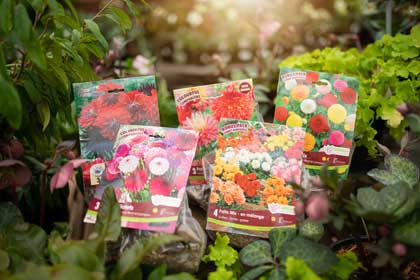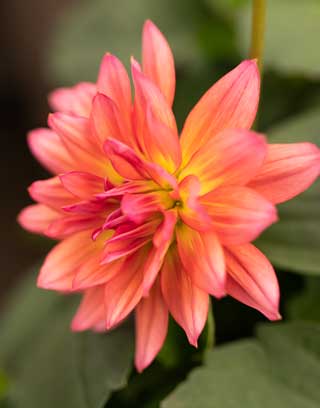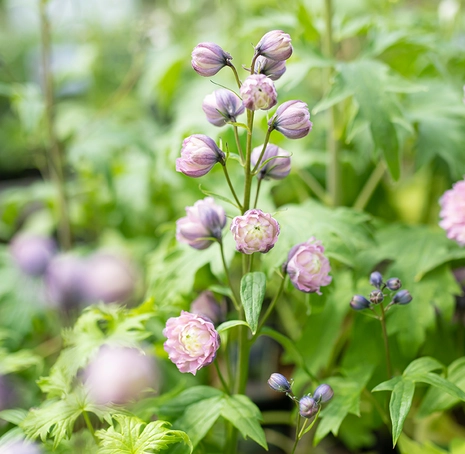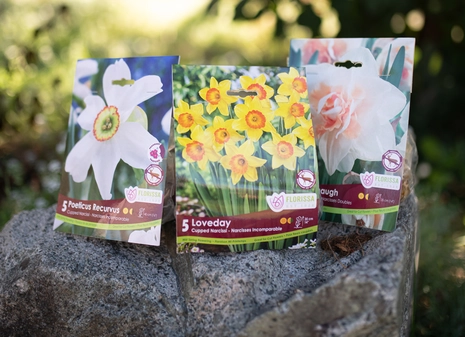
Written by Ingrid Hoff
The prettiest flower to come out of the weirdest looking bulb. Actually, it’s technically a tuber not a bulb so it’s more related to a potato than a tulip. They are the most amazing group of flowering plants that add a little bit of tropical spice to your outdoor space. Native to Mexico and Central America while they look exotic and tropical, they are easy to grow. The ratio of effort required to reward reaped is high with these plants.
Types
To say dahlias are variable is putting it mildly, this is a plant that has been hybridized and bred so much they need to be classified into groups. The Royal Horticultural Society maintains an International Register of Dahlia Names and according to them there are over 57,000 registered cultivars that are classified into 14 groups. But every year about a hundred new cultivars are added. They are separated based on their flower shape: singles, anemone-flowered, waterlily types, decorative, cactus, pompon, ball, peony flower, etc… the list goes on. And that doesn’t even touch on the ones with beautiful bronze and burgundy foliage.
For a more basic approach: they come in small, medium, and large in both plant and flower size. There are compact dwarfs perfect for a pot, stately giants that can tower above other plants the back of a border, and everything in between. And the flowers, from diminutive pompoms at 5cm (2”) in diameter to 30cm (1”) well-named dinner plate dahlias.
Once you know what size you need then start looking for the flower colours and shapes that appeal to you.
 Growing
Growing
If you can grow tomatoes, you can grow dahlia. Neither of them do well in cold soil so make sure all danger of frost has passed with a nighttime termperature of 10 °C or more. Enjoy the flowers from midsummer through to autumn, when the flush of spring has past and the garden often needs a boost.
In fact, dahlias are great for containerizing so if you don’t have a plot of land then don’t worry. Get a smaller variety and plant it in a container to enjoy on the deck or patio.
Dahlias need lots of warm sunlight, with moist, but well-draining soil. They are susceptible to rot, so much so that it is recommended you don’t water them after planting until you see shoots erupting from the soil. Generally speaking, you want to plant the tubers about 10-15cm deep, but really you need to read the packaging the tuber comes. Remember that some of the bigger varieties may need staking, so be sure to install that at planting time. Tomato cages do double duty as perfect dahlia supports.
One thing you should be aware of is aphids are also very fond of dahlias. Often, they can be dispatched with a squishing from the gardener's fingers (use gloves) or a blast from the garden hose (just make sure you don’t blast your flower as well). If these tricks don’t work for you then head down to GARDENWORKS and one of the knowledgeable staff can help you find something to do the trick.
Once the flower die back, make sure to deadhead.
 Overwintering
Overwintering
Technically, perennial dahlias are often treated as annuals, but they don’t have to be. The tubers are only hardy to USDA Zone 8, but being tubers, they are well suited for dormancy. If you live in a mild area (Zone 7-8) and you’re a gambler then you may want to leave them in the ground and hope for the best. But if you live somewhere colder or want to make sure to have them year to year you need to dig them up, store them for the winter and replant each spring. It sounds like a lot of work but really, it’s not. In the fall once the foliage has died back, but before the frost hits, carefully dig them up and allow them to dry. Do not wash them or they will rot. Cut off any nasty or rotten bits, brush the soil off, and store in a cool (frost free) dry place. They will be ready to plant again next year.
Fun Facts
-
The dahlia is the national flower of Mexico
-
Dahlias were named to honour Anders Dahl who was a Swedish botanist and student of Carl Linnaeus, who developed the modern system of botanical naming. Thanks for the Latin Carl.






